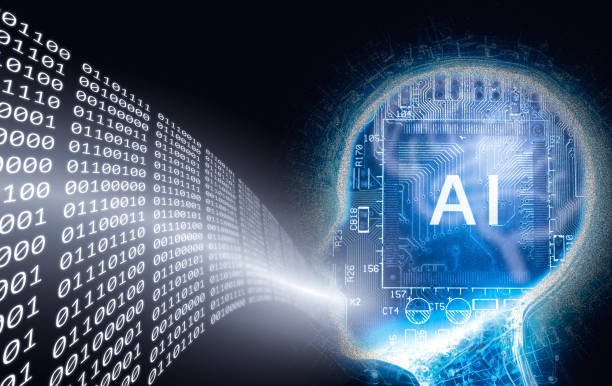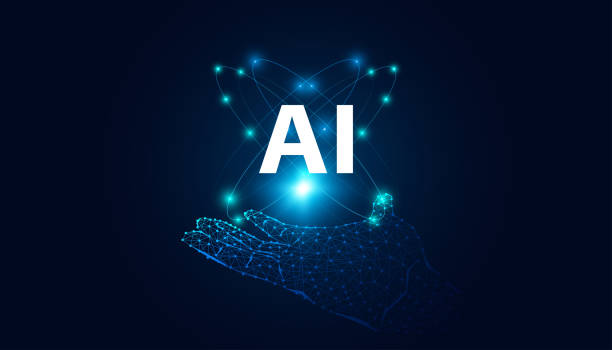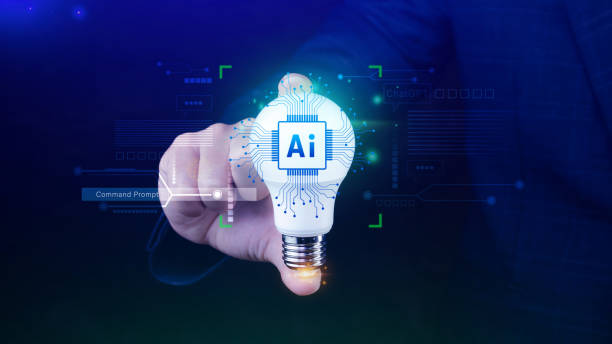Introduction to the Concept of AI Robots and Their Evolution
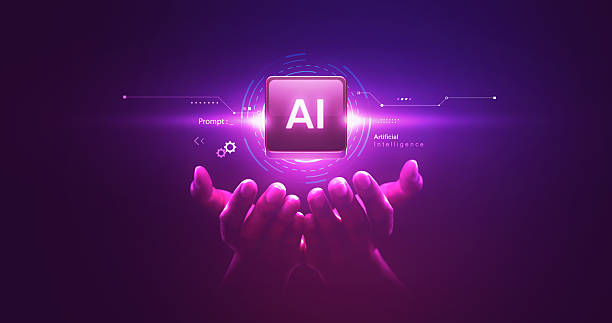
Introduction to the Concept of AI Robots and Their Evolution
#AI Robot is a combination of two important fields of technology: robotics and artificial intelligence.
Simply put, an AI robot is a machine capable of performing complex tasks that usually require human intelligence.
These tasks include learning, reasoning, problem-solving, understanding natural language, and even creativity.
The evolution of AI robots has come a long way, from simple programmed machines to complex systems capable of learning and adapting to the environment.
Initially, robots were mainly used to perform repetitive and dangerous tasks in industrial environments.
These robots were pre-programmed and incapable of performing tasks outside of their program.
But with the advancement of artificial intelligence, robots have gained the ability to understand and process complex information.
Machine learning algorithms allow robots to learn from data, identify patterns, and make intelligent decisions.
This transformation has opened new doors for the applications of AI robots in various fields.
Today, AI robots are used in various industries, from manufacturing and healthcare to agriculture and customer service.
They can perform various tasks, from complex surgeries and driving self-driving cars to answering customer questions and providing financial advice.
The evolution of AI robots is constantly continuing, and it is expected that they will play an even more important role in our lives in the near future.
Did you know that your customers’ first impression of your company is your website? Multiply the credibility of your business with a powerful corporate website from Rasaweb!
✅ Exclusive and eye-catching design tailored to your brand
✅ Improved user experience and increased customer attraction
⚡ Get a free consultation!
Main Components of AI Robots
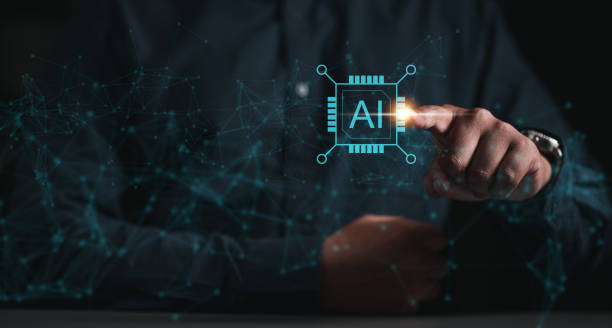
Main Components of AI Robots
An #AI robot consists of several main components that, working together, enable the performance of intelligent tasks.
These components include:
- Sensors Sensors are responsible for collecting information from the surrounding environment.
This information can include images, sounds, temperature, pressure, and other physical parameters.
The sensors convert the collected information into electrical signals that can be processed by a computer. - Processor The processor is the brain of the robot and is responsible for processing the information collected by the sensors and making decisions.
The processor uses artificial intelligence algorithms to analyze data, identify patterns, and make intelligent decisions. - Actuators Actuators are responsible for moving the robot and interacting with the surrounding environment.
Actuators can include motors, pumps, valves, and other mechanical devices.
The processor sends the necessary commands to the actuators so that the robot can perform its tasks. - Software Software consists of programs that determine how the robot operates.
The software includes artificial intelligence algorithms, motion control programs, and other application programs.
These components work together in a coordinated manner so that the #AI robot can perform its tasks effectively and intelligently.
For example, a robot vacuum cleaner uses sensors to identify obstacles and uncleaned paths.
The processor analyzes the collected information and sends the necessary commands to the actuators so that the robot can automatically move around the house and clean the floor.
Various Applications of AI Robots in Different Industries

Various Applications of AI Robots in Different Industries
AI robots have a wide range of applications in various industries and are increasingly reshaping the way things are done.
Some of the important applications of AI robots include:
- Manufacturing AI robots are used in production lines to perform repetitive and dangerous tasks, such as welding, painting, and assembling parts.
These robots can work with high accuracy and speed and increase productivity. - Healthcare AI robots are used in surgery, disease diagnosis, rehabilitation, and patient care.
These robots can perform complex surgeries with greater precision, diagnose diseases in the early stages, and help patients recover faster. - Agriculture AI robots are used in harvesting, spraying, irrigation, and monitoring farms.
These robots can help farmers increase productivity, reduce costs, and protect the environment. - Customer Service AI robots are used in contact centers to answer customer questions, provide technical support, and resolve problems.
These robots can be available 24/7 and help improve customer experience. - Transportation AI robots are used in self-driving cars, drones, and other vehicles.
These robots can help reduce accidents, improve traffic flow, and reduce air pollution.
These are just a few examples of the widespread applications of #AI robots in various industries.
With the advancement of technology, it is expected that the applications of AI robots will increase in the near future.
| Industry | Application | Advantages |
|---|---|---|
| Manufacturing | Production Line Automation | Increased Productivity, Reduced Errors |
| Healthcare | Robotic Surgery | Higher Accuracy, Shorter Recovery Time |
| Agriculture | Automatic Product Harvesting | Reduced Costs, Increased Speed |
Challenges and Limitations of AI Robots
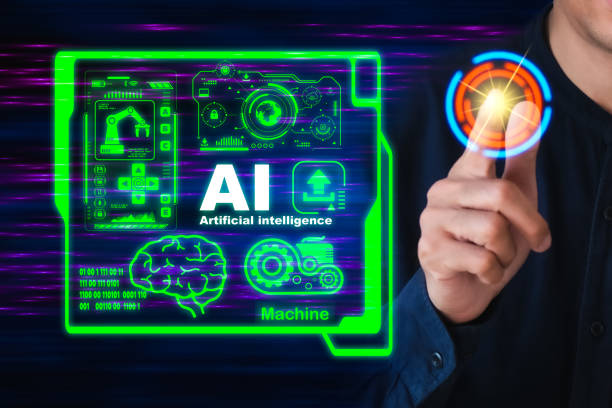
Challenges and Limitations of AI Robots
Despite their many advantages, #AI robots also face challenges and limitations.
Some of these challenges include:
- High Cost Developing and deploying AI robots can be very costly.
The cost of purchasing the robot, installation and setup, personnel training, and maintenance can be prohibitive for many companies and organizations. - Complexity AI robots are complex systems that require a high level of expertise and skill for design, programming, and maintenance.
This complexity can cause problems and disruptions in the robot’s performance. - Ethical Considerations The use of AI robots can raise important ethical considerations.
For example, questions arise about the responsibility of robots in the event of an error, the protection of data privacy, and the impact of robots on employment. - Security AI robots can be vulnerable to cyber attacks and misuse.
For example, hackers can take control of an industrial robot and cause damage to equipment or even humans. - Reliability AI robots are not yet fully reliable and may be prone to errors in certain conditions.
For example, a self-driving robot may be involved in an accident in adverse weather conditions or when faced with an unexpected situation.
Addressing these challenges and overcoming these limitations is essential for expanding the applications of #AI robots and fully benefiting from their advantages.
Is your online sales not as expected? With Rasaweb, solve the problem of low sales and poor user experience forever!
✅ Increase the conversion rate of visitors to customers
✅ Create an enjoyable user experience and increase customer trust
⚡ Take action now to receive a free consultation!
The Future of AI Robots and Their Impact on Human Life
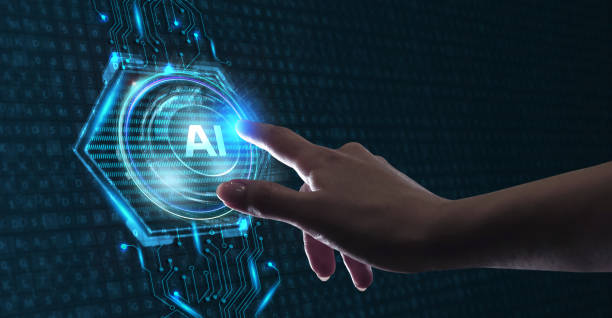
The Future of AI Robots and Their Impact on Human Life
The future of #AI robots looks very bright.
With the advancement of technology, robots are expected to become smarter, more capable, and cheaper.
These developments can have a profound impact on human life.
- Increased Productivity AI robots can increase productivity in various industries by performing repetitive and dangerous tasks.
This can lead to economic growth and increased social welfare. - Creating New Job Opportunities Although robots may eliminate some jobs, they will also create new job opportunities.
These opportunities include jobs in the design, programming, maintenance, and management of robots. - Improving Quality of Life AI robots can improve the quality of human life by providing better healthcare services, caring for the elderly and disabled, and creating smarter living environments.
- Solving Global Problems AI robots can play an important role in solving global problems such as climate change, hunger, and disease.
However, to fully benefit from the advantages of AI robots and prevent potential problems, it is necessary to seriously address the ethical, security, and social issues related to them.
Machine Learning and Its Role in the Development of AI Robots

Machine Learning and Its Role in the Development of AI Robots
Machine learning is one of the main branches of artificial intelligence that plays a vital role in the development of #AI robots.
Machine learning allows robots to learn from data, identify patterns, and make intelligent decisions without being explicitly programmed.
Machine learning algorithms allow robots to:
- Object Recognition Robots can use machine learning algorithms to recognize different objects in images and videos.
This capability is very important for self-driving robots, industrial robots, and domestic robots. - Natural Language Understanding Robots can use machine learning algorithms to understand human natural language.
This capability is very important for customer service robots, translator robots, and search robots. - Path Planning Robots can use machine learning algorithms to plan the best path to reach their destination.
This capability is very important for self-driving robots, delivery robots, and warehouse robots. - Motion Control Robots can use machine learning algorithms to control their movements.
This capability is very important for sports robots, surgeon robots, and artist robots.
With the advancement of machine learning algorithms, it is expected that AI robots will be able to perform more complex tasks and play a more important role in our lives in the near future.
Humanoid Robots: Performance and Capabilities Review

Humanoid Robots: Performance and Capabilities Review
#Humanoid robots are robots designed in the shape of humans and capable of performing tasks that are usually performed by humans.
These robots can be used in various fields such as customer service, healthcare, education, and entertainment.
Some of the important capabilities of humanoid robots include:
- Movement Humanoid robots can perform various movements such as walking, running, jumping, and climbing stairs using motors and complex control systems.
- Vision Humanoid robots can see their surroundings and recognize different objects using cameras and image processing algorithms.
- Hearing Humanoid robots can hear different sounds and understand human language using microphones and sound processing algorithms.
- Touch Humanoid robots can sense pressure, temperature, and other physical parameters using tactile sensors.
- Speaking Humanoid robots can speak to humans using speakers and sound generation algorithms.
Despite significant advances in the field of humanoid robots, there are still many challenges to achieving a complete humanoid robot.
These challenges include high cost, complexity of design and construction, software limitations, and ethical issues.
| Feature | Description |
|---|---|
| Movement | Ability to walk, run, jump |
| Vision | Recognition of objects and environment |
| Hearing | Understanding human language |
| Touch | Sensing pressure and temperature |
| Speaking | Communication with humans |
The Role of AI Robots in Education and Learning
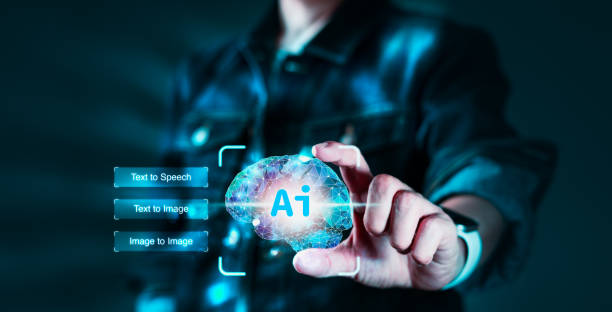
The Role of AI Robots in Education and Learning
#AI robots can play an important role in education and learning.
These robots can be used as private tutors, teaching assistants, and interactive tools for students.
Some of the applications of AI robots in education and learning include:
- Private Tutor AI robots can act as private tutors, helping students learn various subjects.
These robots can automatically assess students’ knowledge levels and provide appropriate educational programs. - Teaching Assistant AI robots can act as teaching assistants, helping teachers with various tasks.
These robots can grade student assignments, answer their questions, and find appropriate educational resources. - Interactive Tool AI robots can act as interactive tools, helping students learn complex concepts.
These robots can create educational simulations, design educational games, and help students conduct virtual experiments.
By using AI robots, it is possible to personalize education, increase access to education, and improve the quality of education.
#AI robot is promising in this field.
Did you know that your company’s website is the first point of contact for 75% of potential customers?
Your website is the face of your brand. With Rasaweb’s corporate website design services, create an online presence that attracts customer trust.
✅ Creating a professional and lasting image of your brand
✅ Attracting target customers and increasing online credibility
⚡ Get free advice from Rasaweb experts!
Security Aspects of AI Robots and Solutions to Counter Threats
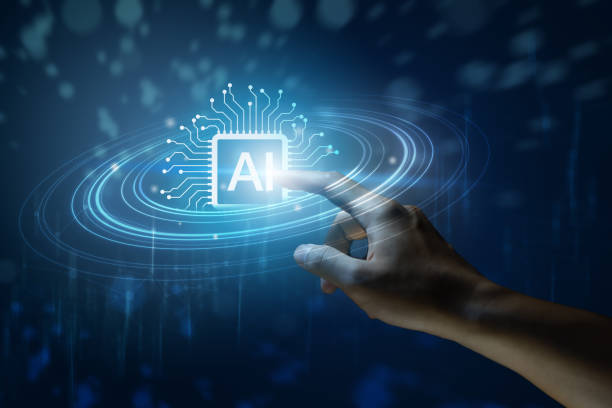
Security Aspects of AI Robots and Solutions to Counter Threats
#AI robots, like any other technology system, can be exposed to security threats.
Hackers can disable robots, steal sensitive information, and even harm humans by infiltrating robot control systems.
Some of the important security aspects of AI robots include:
- Cyber Attacks AI robots can be exposed to cyber attacks such as malware, phishing, and denial-of-service attacks.
- Data Theft AI robots can collect and store sensitive information.
Hackers can steal this information by infiltrating robot systems. - Unauthorized Control Hackers can take unauthorized control of robot systems by infiltrating them.
This can lead to damage to equipment, humans, and the environment. - Deceptive Attacks Hackers can use deceptive attacks to force AI robots to perform unauthorized tasks.
To counter these threats, it is necessary to take appropriate security measures.
These measures include:
- Using strong encryption to protect sensitive information
- Installing firewalls and intrusion detection systems to prevent cyber attacks
- Regularly updating software and operating systems to fix security vulnerabilities
- Training users to identify and prevent phishing attacks
- Creating backup systems to recover information in case of an incident
By adopting these security measures, #AI robots can be protected against threats and their benefits can be realized.
Case Study of Successful AI Robot Projects in Iran and the World
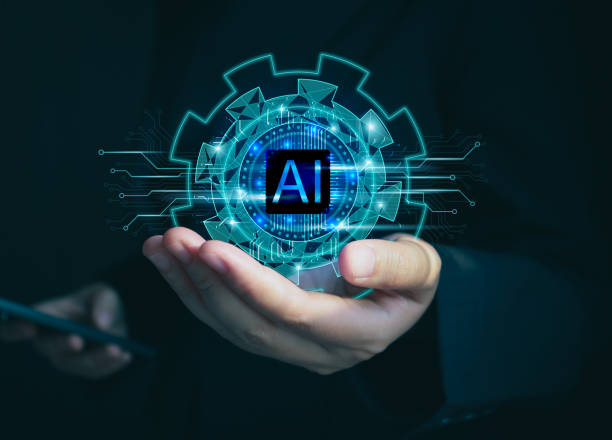
Case Study of Successful AI Robot Projects in Iran and the World
#AI robots are being developed and used around the world, and successful projects have been carried out in this field.
Examining these projects can help us better understand the potential of AI robots and their applications.
Successful AI Robot Projects in the World
- Waymo Self-Driving Cars Waymo (a subsidiary of Google) is developing self-driving cars that can drive without human intervention using artificial intelligence and machine learning.
- Da Vinci Surgical Robots Da Vinci surgical robots are used in hospitals around the world to perform complex surgeries with high precision.
- Amazon Warehouse Robots Amazon uses warehouse robots to move goods in its warehouses.
These robots can work with high speed and accuracy and increase productivity.
Successful AI Robot Projects in Iran
- Surena Robot Surena is a humanoid robot that was designed and built by the University of Tehran.
This robot is capable of performing various movements and interacting with humans. - Search and Rescue Robots Search and rescue robots are used in search and rescue operations in disaster areas.
These robots can help find missing and injured people. - Agricultural Robots Agricultural robots are used on farms to perform tasks such as harvesting, spraying, and irrigation.
These robots can help increase productivity and reduce costs.
These are just a few examples of successful #AI robot projects in Iran and the world.
With the advancement of technology, we expect to see more successful projects in this field in the near future.
#AI robots can be useful in many industries.
Frequently Asked Questions
| Question | Answer |
|---|---|
| What is an AI robot? | An Artificial Intelligence (AI) Robot is a machine capable of understanding its environment, reasoning, learning, and making decisions to perform tasks independently. |
| What is the difference between regular robots and AI robots? | Regular robots perform repetitive tasks based on pre-programmed instructions, while AI robots can learn from experience, interact dynamically with the environment, and even behave in a way that resembles human intelligence. |
| What are the main applications of AI robots? | They are used in industries (manufacturing, assembly), medicine (surgery, diagnosis), services (customer support, domestic), exploration (space, underwater), and many other fields. |
| What technologies are used in the construction of AI robots? | Machine Learning, Computer Vision, Natural Language Processing, Deep Learning, and Robotics are among the key technologies. |
| Can AI robots have emotions? | Currently, robots do not have emotions in the human sense. They can identify emotions and react to them, but they do not experience emotions themselves. |
| What are the main challenges in developing AI robots? | Safety, reliability, ethics, autonomy, adaptability to complex environments, and natural interaction with humans are important challenges. |
| How do AI robots learn? | They typically learn by using large volumes of data, machine learning algorithms, and deep learning to identify patterns and make decisions. |
| Examples of AI robots in everyday life? | Smart robotic vacuum cleaners, customer support chat bots, self-driving cars, and surgical robots in hospitals. |
| Are AI robots a threat to human jobs? | Some repetitive jobs may be automated, but at the same time, robots can increase productivity and create new jobs in the development, maintenance, and monitoring of these systems. |
| How is the future of AI robots predicted? | They are expected to become smarter, more autonomous, and capable of performing more complex tasks, and to interact more closely with humans in various environments. |
And other services of Rasa Web advertising agency in the field of advertising
Intelligent content strategy: a new service to increase campaign management through the optimization of key pages.
Intelligent digital branding: a combination of creativity and technology for digital branding through intelligent data analysis.
Intelligent digital advertising: an effective tool to increase sales by optimizing key pages.
Intelligent advertising campaign: professional optimization for digital branding using SEO-based content strategy.
Intelligent customer journey map: a quick and efficient solution to increase website visits by focusing on optimizing key pages.
And more than hundreds of other services in the field of internet advertising, advertising consulting and organizational solutions
Internet advertising | Advertising strategy | Reportage ad
Resources
What is Artificial Intelligence?
,What is Data Analysis?
,What is AI Robotics?
,What is an AI Chatbot?
? For a significant leap in your business in the digital space, Rasaweb Digital Marketing Agency is ready to provide services such as professional website design and comprehensive online marketing strategies to you with a new and specialized approach.
📍 Tehran, Mirdamad Street, next to the Central Bank, South Kazerun Alley, Ramin Alley No. 6

